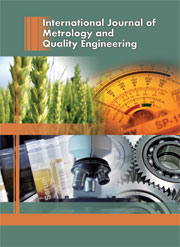Article contents
Developing a lean measurement system to enhance process improvement
Published online by Cambridge University Press: 06 March 2014
Abstract
A key ingredient to underpin process improvement is a robust, reliable, repeatable measurement system. Process improvement activity needs to be supported by accurate and precise data because effective decision making, within process improvement activity, demands the use of “hard” data. One of the oldest and most established process improvement methods is Deming’s Plan-Do-Check-Act (PDCA) cycle which is reliant on the check phase, a measurement activity where data is being gathered and evaluated. Recent expansions of the PDCA such as the Six-Sigma Define-Measure-Analyse-Improve-Control (DMAIC) methodology place significant importance upon measurement. The DMAIC cycle incorporates the regimented requirement for the inclusion of measurement system analysis (MSA) into the breakthrough strategy. The call for MSA within the DMAIC cycle is to provide the improvement activity with a robust measurement system that will ensure a pertinent level of data during any validation process. The Lean methodology is heavily centred on the removal of the seven Mudas (wastes) from a manufacturing process: defects, overproduction, transportation, waiting, inventory, motion and processing. The application of lean, particularly within the manufacturing industry, has led to a perception that measurement is a waste within a manufacturing process because measurement processes identify defective products. The metrologists’ pursuit for measurement excellence could be construed as a hindrance by the “cost down” demands being perpetrated from the same organisation’s lean policy. So what possible benefits does enforcing the regimes of the lean and quality philosophies upon the measurement process have and how does this ultimately enhance the process improvement activity? The key fundamental to embed with any process improvement is the removal of waste. The process improvement techniques embedded within lean and quality concepts are extremely powerful practices in the drive to eradicate waste but there are numerous contextual problems with the application of the process improvement activity and its associated measurement system. The application demands of the organisation may be dependent on a number of financial and resource constraints which may introduce reasons not to apply stringent measurement methodology and practice. The failure of various process improvement activities due to poorly managed measurement activity has arguably never been comprehensively analysed. Process improvement activity theory fully embellishes the need for applied robust measurement systems, so how can process improvement and measurement be systematically aligned to gain benefits? The aim of this paper is to consider whether lean philosophies can be integrated and applied within measurement systems. The discussion seeks to identify if seven Muda exist within measurement systems and whether in doing so this will lead to benefits for process improvement activities.
Keywords
- Type
- Research Article
- Information
- International Journal of Metrology and Quality Engineering , Volume 4 , Issue 3 , 2013 , pp. 145 - 151
- Copyright
- © EDP Sciences 2014
References
- 7
- Cited by




